A few words again about the revision of the Japanese animal welfare law. There are two very new and important concepts that have appeared in the revised law. One is that of the containment of animal hoarding. Needless to say, animal hoarding has been a long standing issue in this country, just as in other countries. It would not be an overstatement t say that every one of the 47 prefectures has experienced or is currently experiencing this problem. During the discussions in preparation of the revision animal hoarding was one of the key issues discussed by the task force. Fortunately the importance of finding countermeasures for this difficult problem has been recognized by the politicians as well and new clauses have been added to include the legal handling of such. First of all, the factors that interfere with living conditions, the existence of which would warrant a recommendation/order from the authorities has now been clearly defined as " factors such as excessive noise, noxious odors, pollution from animal hairs, and the generation of large numbers of pests/insects ". This will help to clarify when the relevant authorities should step into the scene. The second point is the issuing of orders to intervene when the animals in question are seen to be in danger of being abused, which includes the danger of emaciation/debilitation. Up till this time recommendations/ orders could not be issued on behalf of the animal, but this situation has now been amended. Measures that may be written into ordinances includes the compulsory registration of those who own multiple animals.
The other new concept written into the revision is the rescuing of animals during a disaster. One need not explain the importance of such to the nation after the traumatic incident of March, 2011. The revised law refers to this issue in the clauses pertaining to the central plan for the promotion of animal welfare and control that every prefecture is mandated to draw up. The revision has added a new item to the list of things that the local governments must include in this plan, measures to hold and care for animals during disasters. This means that all local bodies must now plan ahead about how animals will be supported during such times, including housing arrangements and daily care. Though the natural disaster that hit the country last spring was indeed a tragedy for many, many people, in a way it may have been a blessing for the revision of the animal welfare law. It has indeed helped everyone ,including the politicians and the bureaucrats, to realize how important it is to be prepared to help the animals along with the people during difficult times. Though the revised law is still lacking in many ways, nevertheless, the country has moved up a notch in the eyes of the non-human citizens.
This site publishes columns regarding the actual situation of animals in Japan, on a regular basis. After a period of inactivity, we re-opened the site with the intention of being of help to anyone looking for this kind of information, and furthermore, creating an opportunity for the happy and borderless co-existence of humans and animals.
- Visual concept of the AIJ icon
-
The character shown in the AIJ icon is “Akabeko”, the legendary red bull of the Aizu region in Fukushima Prefecture. It is said that Akabeko helped black cattle that were struggling to carry wood to restore a temple damaged by a big earthquake that hit the region about 400 years ago. As the Akabeko disappeared soon after its great contribution, people believed it was help sent from Buddha. People in that region have held Akabeko as a bearer of ‘Good Fortune’ ever since. The black circles on Akabeko are considered to be indications of the pox. According to another legend, the red bull was the only animal that survived smallpox infection in ancient times. People believed its red body color also had an apotropaic power and that children owning an Akabeko toy escape from misfortunes.
- Visual concept of the AIJ icon
- The character shown in the AIJ icon is “Akabeko”, the legendary red bull of the Aizu region in Fukushima Prefecture. It is said that Akabeko helped black cattle that were struggling to carry wood to restore a temple damaged by a big earthquake that hit the region about 400 years ago. As the Akabeko disappeared soon after its great contribution, people believed it was help sent from Buddha. People in that region have held Akabeko as a bearer of ‘Good Fortune’ ever since. The black circles on Akabeko are considered to be indications of the pox. According to another legend, the red bull was the only animal that survived smallpox infection in ancient times. People believed its red body color also had an apotropaic power and that children owning an Akabeko toy escape from misfortunes.
Nov.
2012
The Revised Animal Welfare Law

Prepared for Zenoaq by Animal Literacy Research Institute
Oct.
2012
Animals in Entertainment
A very popular character in a major television show will no longer be able to entertain the public. Pan, a 10 year old male chimpanzee, has appeared in a popular television series for a number of years as the co- host of a variety show with a famous comedian. Pan has done everything "human" with his homo sapiens counterpart, including wearing the same overalls and walking the show's mascot bulldog. His appearance on this weekly one hour program, however, has been the target for much criticism for a number of years by experts including the Ministry of the Environment. As chimpanzees are a protected species, the national law concerning the preservation of endangered species states that these animals may not be released for reasons other than breeding. Pan's ownership was transferred to his current owner, a zoo in Kumamoto Prefecture on the island of Kyushu, from a different facility in Miyazaki Prefecture on the same island. Theoretically, this should have been for a breeding program. However, since the TV show requested his appearance in 2004, Pan has been one busy chimp with a weekly program of his own. As a result, JAZA, the Japan Association of Zoos and Aquariums, as well as the Ministry of the Environment have been questioning his owner organization about the absence of any efforts on their part to integrate him into a breeding program.
Chimpanzees need to be integrated into a group of their own kind whilst approaching sexual maturity in order for them to be able to breed successfully and experts in JAZA were worried that this was not happening for Pan. Unfortunately, after receiving these inquiries as well as warnings , Pan's owner association decided to go their own way, i.e. they withdrew their membership from JAZA! It seems somewhat strange and irresponsible but the Ministry and JAZA went no further in pursuing the issue after their withdrawal. So, Pan continued to "act " on stage and on TV and became the "most famous chimp" in the country. But at 10 years of age, having reached sexual maturity, Pan who is, needless to say, a wild animal, was an accident waiting to happen. And happen it did. During a show on his home ground in Kumamoto Pan decided to act on his own. A full grown male chimp is an extremely powerful creature and should he decide to attack, humans are not capable of stopping this act. Immediately following the end of the show, Pan ran off from the trainer who was at the time leading him off the stage holding his hand, like a human child. Pan ran to the end of the stage and began to attack the young female assistant who was waiting in the wing. He bit her in several places, the ankle bite being so severe it caused a great deal of blood loss. The facility had to call in an ambulance (actually an emergency medical helicopter) to transport the poor girl to the hospital immediately. To those who are familiar with wild animals this comes as no surprise. Something like this was bound to happen sooner or later. The sad thing is that Pan's owner organization has not made any public comments after the accident. Furthermore, the media who so loved this little chimp has not made any extensive reports on the incident. The co-host of the show, the nationally famous comedian, Pan's buddy of many years, has not made any sensible comments about the behavior of his long time friend. It seems to be the same for other countries in which such accidents have occurred, we humans never learn, or want to learn from our mistakes. The greatest victim of the accident is not the injured girl, but Pan himself.
Prepared for Zenoaq by Animal Literacy Research Institute
Sep.
2012
Revision of the Animal Welfare Law

Though the political situation in Japan is currently very unstable with no one party capable of taking the lead in crucial issues, the drafting of the revised animal welfare law is slowly moving forward. One of the major issues to be addressed this time is the age at which puppies and kittens may be sold at pet shops. For many years the Japanese pet industry has displayed extremely young animals in store windows which has always frustrated animal welfare organizations. The industry still relies heavily on puppy-mill type "producers" to supply these animals and that also has been a point heavily criticized by the welfare sector. Many such dogs and cats are separated from their mothers and littermates at a very early age and this in itself has been the source of many physical and behavioral issues that the animals develop later in life. During the discussions held in the Ministry of the Environment by the task force entrusted with formulating the recommendations for various issues, the number of days from birth at which puppies may be taken away from their mother was a source of heated debate. The representatives of the industry insisted that 45 days was enough, that anything longer would put many people out of business. The welfare side responded with equal vigor stating that puppies should not be moved away until 8 weeks of age and that this was a standard that many other countries were using. The representatives of the veterinary community also tended to support the arguments put forth by the welfare side. The discussion on this topic failed to arrive at a consensus and was left to the discretion of the parliamentarians who would be the ones to actually decide on the final draft to be presented to the legislature. Finally after much debate, the representatives of the leading parties meeting to decide on the actual contents of the law decided to go for 56 days, the 8 weeks that the animal welfare community had long been demanding. As a result of this meeting of politicians, the revised animal welfare law was finally presented to the Diet and successfully voted upon on August 29, 2012. This was indeed a victory for the animal welfare camp. However , it is yet too early to rejoice as the contents of this decision was not as clear cut as one would have liked. The decision was reached to write into the law that puppies and kittens may not be sold until they are 8 weeks of age, but because of the changes this would require for the industry to embark upon, a transition period will be provided. For 3 years after the effectuation, the industry may still sell animals at 45 days. This will after 3 years be extended to 49 days. The 56 days will come into force "within a 5 year period". This means that the 56 day rule will in fact not be enforced till the next review of the animal welfare law. Of course this is indeed a step forward, not as expeditious as some would have liked but nevertheless an advancement from what is. As they say "better late than never".......
Prepared for Zenoaq by Animal Literacy Research Institute
Aug.
2012
Children and the Natural Environment

Children and their relationship with animals has been a popular topic for many educators and researchers. Needless to say many children living so-called "privileged lives" in the more developed nations of the world do not live with animals. nor are they given many opportunities to come in contact with the natural world. In fact there is a popular book dedicated to this topic, "The Last Child in the Woods" by Richard Louv, that refers to these children as suffering from Nature Deficit Disorder. Though some people may think this term to be an overstatement, the concept is very interesting. It refers to something much more general and wider than the concept of "children and animals" so often talked about in many professional circles. Children are interested in many types of living creatures, not only the furry ones, and not only the four legged , or the winged ones. In recent years, there has been a slow but steady increase in bringing children closers a to living beings in the form of insects. Monitoring the flight of the Monarch family of butterflies has been one such area. In Japan a very interesting facility was built in Gunma Prefecture in the year 2005. The Gunma Forest of Insects is a 45 hectare manmade habitat for a multitude of indigenous species of insects and small critters. There are forests, rivulets, ponds, and fields within the area, all manmade to mimic the natural environment of the region, i.e. the facility is also an attempt at recreating or resurrecting the original habitat that has been marred by human hands in the name of development. The Gunma Forest of Insects has experts who can lead the children on expeditions through this habitat to observe the many forms of wildlife present there. The children once put in this environment are quick to rediscover their innate curiosity towards living beings and start bombarding the expedition leader with questions about the insects around them. The experts who lead the children through the forest state that may children have had the experience of seeking information about these creatures via the internet or from books, but that that experience is nothing compared to what they are able to see, touch , and feel for themselves within their true natural habitat. During the summer months when the children are out of school, the facility runs "night safaris" where the children are given the chance to travel through the forest area and see all the nocturnal activities of the creatures there. The children point their flashlights on the trunk of a large tree to see huge beetles feasting on sap, they see cicada larvae emerging from the ground to shed their skin and turn into full fledged cicadas. The director of the facility relayed the true worth of such a facility during an interview where he stated that insects are in a world that is apart and unlike the human world, and that is the reason that children are so curious about them. He stated that when children learn about, for example, a certain curious movement being a particular insect's way of looking for a place to lay their eggs, i.e. a specific plant, then their interest is transferred to the plant as well.. Likewise, if the strange outward appearance of an insect is to hide from predators such as birds or other small animals, the children become interested in finding out more about the small animals that eat these insects. Building such facilities may be the antidote for the aforementioned nature deficit disorder in children. But of course protecting the existing habitats is surely the best and the wisest way.
Prepared for Zenoaq by Animal Literacy Research Institute
Jul.
2012
So What Happened to That Bear Farm?

The bear farm in Akita Prefecture where 2 employees were killed earlier this year is still facing numerous issues, none of which have yet been solved. The owner of this bear farm, Akita Hachimantai Bear Farm, was indicted for professional negligence resulting in death on June 9, 2012. The 27 bears remaining in the facility are now left with no "owner" to take on the responsibility for their care. There are 21 brown bears and 6 Asiatic black bears still being kept at the farm. The Akita prefectural government has temporarily employed caretakers to look after these animals starting this month. The prefecture is also providing food for the bears. However, the prefectural government has stated that the temporary employees will be kept only through October of this year. What will happen to the bears after October? The Akita Prefectural assembly is currently discussing various options available to them. Some members of the assembly have said that a new manager/proprietor should be found for the farm. Others have asked whether or not it would be possible to make the farm a public facility run by the prefectural government. No assembly member has taken up a positive stance towards euthanizing the bears. The bears kept in these notorious bear farms are oftentimes in ill health, have behavioral issues, and marred by continuous fighting amongst themselves.
Though it would be ideal if a true sanctuary could be set up to keep these bears, perhaps under the current circumstances, euthanasia may be one humane way of dealing with these scarred animals. The prefectural government and likewise the assembly feel very strongly that euthanizing the bears would hurt the "image" of Akita Prefecture. Some assembly members have voiced concerns over the terrible effect such a measure would have on the tourist industry in the region. The prefectural government has been in contact with the Japanese Association of Zoos and Aquariums about facilities that may be able to take in these bears. Till date, 2 facilities have expressed their willingness to take in one Asiatic black bear each, but none have come forth for the brown bears. The Akita Hachimantai Bear Farm has lost many bears in the past due to injuries as well as to extreme climatic conditions. The bears that died of injuries, and those that simply froze to death, have been buried " somewhere " in the grounds of the facility, according to the former owner. This owner has also been quoted as saying, "...lessen the food supply and the numbers will decrease due to natural selection...." when asked about how the facility could possibly survive in its current state. Hearing such words, euthanasia seems almost to be a compassionate way to end the suffering of these animals. Let us hope that the prefectural government does not decide to allocate minimum funds to keep the facility going in its current state, simply through the fear of public outcry against euthanasia. If the facility is to continue it must do so by first reassessing the care of the bears and then by implementing drastic reform measures to ensure their welfare.
Prepared for Zenoaq by Animal Literacy Research Institute
Jun.
2012
The Pig Farm Incident
Many of you may already be aware of the fact that a major Japanese meat products company, X, has been criticized for the various acts of animal abuse that were found to have occurred in one of their facilities. Their locally incorporated company in the United States owns and operates a large scale pig farm called X Premium Farms. Earlier this year a video clip of several workers in the facility manhandling the pigs appeared on U-tube to the horror of those who accessed the scenes. The aforementioned workers were throwing weakened piglets around as though they were inanimate objects, pulling unwilling pigs along with a thick rope around their snout and more. Needless to say the video was taken undercover. The world would never have known of the goings on inside the facility had it not been for this video. Obviously there was a large public outcry about the blatant animal abuse shown on the video clip and other companies, buyers of XPF, decided to stop their purchases. X needed to set matters straight as soon as they could. Soon after the incident the main headquarters in Japan issued a statement, in Japanese, apologizing for "the incident" and promising to look closely into the causes. Despite the fact that the viewing of the video had spread to Japan very quickly thanks to the merits of the cyber network, the domestic media never reported on the incident. There was not a single word or article in any of the papers or the major networks. The local citizens, though, did have full access to the scenes of abuse and many of those who viewed the scenes were angry and disgusted with its contents. After a while, X again posted a full report on the investigation that they had conducted at XPF. The investigation was done with the participation of outside bodies and experts, and the cases of animal cruelty were verified. They were able to identify those workers who did not adhere to the facility's rules and standards of husbandry. The report concluded that this was a "very unfortunate incident, fortunately limited in its scope, instigated by a handful of workers". These workers were dismissed by the company along with their supervisory authority. And finally....after weeks of watching the company being publicly criticized abroad, and domestically by those citizens who had come across the notorious video clip, the Nikkei, a national paper, wrote several lines about the occurrence on their internet news site in the beginning of June. However the paper itself has not printed any articles yet as of June 4. It is extremely interesting to note how silent the Japanese media have been about this case.
One is at a loss as to understand why this is. Is it because they are afraid to report on a company that has traditionally been a big sponsor ? Is it because they think it a trivial matter? Is it because "someone" wants to keep the public in the dark?
The answers to these questions can be given only by the media themselves.....
Prepared for Zenoaq by Animal Literacy Research Institute
May.
2012
Driving With Pooch

More and more pet owners in Japan, especially dog owners, are choosing to travel with their animal companions rather than leaving them at home or boarding them in facilities. This has lead to an increase in dog oriented services being offered at the various service/parking areas along the highways throughout the country. These services include the ordinary, such as dog-runs and toileting areas, but also extend at times to rather unique levels, such as the sales of takeout boxed lunches for dogs. Several years ago, a subcontractor operating service facilities along the highways in and around the metropolitan area began to sell "Doggy Lunches" along with the various fast food options available for humans. These box lunches were developed jointly with a dog food company and includes chicken, vegetables, and bread made from brown rice powder, to be mixed together in the container in which it is sold. The sales of the product started in 15 different service areas and sold 7000 within the first three months! The size of the individual lunch is set for smaller dogs around 3-4 kg and the price is 630yen per box. A hamburger for humans would probably cost one half of this so it does not come cheap. Nevertheless people seem to like the idea. There are, of course, more ordinary services such as dog-runs built alongside many services areas along the highways of Japan. Currently there are more than 30 service areas where fenced dog-runs are available for travelling families to exercise their dog. Many owners are relieved to find that their dog can be allowed to run around freely in between the long rides. Providing such facilities for our canine companions also reduces the risk of irresponsible owners allowing their dogs to behave rambunctiously in public. Just like young children, some dogs may need to "run off" some of their pent up energy every so often, and the service areas have provided a way for them to do so safely. In Okinawa, a major national car rental service, Nippon Rentacar, has added several pet-friendly cars to their fleet of rentals. The back seats and the rear area of these cars are covered with durable material so that the owners do not have to worry about "soiling". Needless to say, the automakers are also very keen on this new trend. In 2005 Honda set up an information site for owners driving with their canine families, Honda Dog.(http://www.honda.co.jp/dog/). This site gives out information to dog owners not only on the facilities available at service areas throughout the highways but also on such things as dog-friendly camping sites, hotels etc.
People around the world are increasingly including their best friend, our canine companions, into every aspect of their lives, and it seems that Japan is no exception.
Prepared for Zenoaq by Animal Literacy Research Institute
Apr.
2012
Memorial Ceremony for the Animals Lost in the Earthquake and Tsunami

On March 25, 2012 a memorial service was held in Rikuzentakada City in Iwate Prefecture. Rikuzentakada is one of the cities that was literally wiped out by the tsunami following the earthquake that hit the area on March 11, 2011. This was probably the first such endeavor and was appreciated by locals as well as by citizens around the country. As soon as the news of the event was broadcast by the local branch of the national broadcasting company, NHK, the hosting organization was flooded with phone calls from around the country commending them for their compassion for our "voiceless friends". The memorial was a two part affair starting with a talk on pet loss and bereavement delivered by the head of the Companion Animal Study Group "Go", Keiko Yamazaki. The talk focused mainly on how losing an animal friend is no different from losing a human family member and also on the fact that due to the magnitude of the disaster in terms of human deaths, pet owners in the disaster area were having a difficult time expressing their grief without feeling a sense of "shame". As one person put it, "when your neighbor has lost a child, a spouse, a sibling...you can't really say I am grieving for my cat...you just can't". Yamazaki stressed that this was indeed understandable, but then added to the 60 some participants,, "but look around you, you are not alone in these feelings, neither are you social misfits, you have every right to grieve". Having created a safe environment for the grieving pet owners the hosting organization then moved the audience to a Buddhist temple atop a hill overlooking what had been the entire port town of Rikuzentakada, now reduced to never ending open space spotted here and there with skeletons of once large corporate structures. At the temple the head priest presided over a Buddhist ceremony to rest the souls of the animals that had died in the disaster. Since most owners were unable to find the remains of their animals the hosting organization provided memorial cards upon which the owners wrote a message to their lost family member. These cards were put on the alter before the priest began the service. Each owner was given a chance to burn incense for his /her animal. The ceremony at the temple was attended by the Mayor of the city. Despite the fact that the mayor himself had lost immediate family to the tsunami, he very gracefully apologized to the grieving owners on behalf of the city for not thinking of holding such a service earlier and expressed his gratitude to the hosting organization for their thoughtfulness. This organization, Save Animals Iwate, came about as the result of a generous donation from the Humane Society International. Though a majority of the money will be used to support local owners and the veterinary community to provide as much care as is possible to the pets of disaster victims the memorial service was a fitting way to start.
At the end of the Buddhist service all the participants walked out to a small stone memorial that the head priest had built on the temple grounds. Some left flowers, some prayed silently, some cried openly.....and yet they all left with a look of relief on their faces, to start another page in their lives.
Prepared for Zenoaq by Animal Literacy Research Institute
Mar.
2012
One Year After the Disaster

Almost an year has passed since the earthquake and tsunami hit northeastern Japan. It is hard to believe that time has passed so quickly. Many of the citizens who had lost their homes in this tragedy are now either living in new homes in other areas of the country or have been able to enter temporary housing facilities built by the local governments. Many animals have also been either rehomed or reunited with their families. However there is one very serious issue facing the animal rescue efforts. The issue has arisen in connection with the animals in the nuclear evacuation zone. There are two outstanding issues in this particular area. One is that of the animals still left inside the evacuation area. According to the Fukushima prefectural authority there were approximately 10,000 dogs and cats within the current evacuation zone. The tsunami, and the evacuation of the human population following the nuclear accident, which left many of them to fare for themselves, most likely took the lives of 60-70 % of these animals. Though efforts have been made to bring these animals out from within the danger zone, there is estimated to be about 4-500 dogs and cats still roaming the region. Due to the fact that pet ownership in these rural areas tend not to adhere so much to current standards of husbandry, many of these animals most likely not spayed/neutered. This means that the population of roaming pets can increase at an alarming rate if the situation is not handled appropriately. The Ministry of the Environment is currently putting together a task force to counter the situation. Their main goal currently is to bring out as many animals as is possible. This may be practical for dogs but as for cats an aggressive TSNR program would most likely be the best way to deal with the issue. The other issue pertains to those dogs and cats that are currently residing in the 2 official shelters that the prefecture has built. There is also a temporary shelter built on the premises of the animal control authority of Tokyo to house those animals brought in by refugees from Fukushima. Tokyo alone experienced an inflow of about 3000 families after the nuclear accident, many of whom are now housed in apartments belonging to the Metropolitan Housing Authority, which unfortunately do not allow pets. The Tokyo shelter was built to accept the pets belonging to such families as well as to bring in animals from the two shelters in Fukushima routinely for adoption in the city where there is a higher population density and hence a higher chance of being adopted. The big issue underlying all of these efforts is the fact that many owners from Fukushima who own animals being housed in these sheltering facilities are extremely reluctant to surrender ownership. In other words these "shelters" are at the moment, not true shelters but rather free temporary holding facilities for owned pets. This tendency is unique to the pet owners in Fukushima. Since many of the families are still unsure of when and how they will be able to return to their homes within the nuclear zone, they do not want to "give away" their pets. Because their ancestral land has not been washed away by the tsunami or totally devastated by the quake, they still have hopes about returning to their homes once again and living with their animal companions. About 60-80% of all animals currently being kept in the two Fukushima shelters are "owned". Needless to say, the longer the animals are kept in a shelter environment the larger their mental stress. If this situation continues much longer, the animals will have become "difficult placements" by the time their families finally decide to agree to adopt them out. The main issue here is how to convince the humans to "let go" for the sake of their pets. In order to do so there will have to be professional involvement to deal with this human factor. The humans themselves have experience so much loss, how would it be possible to convince them to "lose" yet another part of their lives. It is indeed a difficult problem.
Prepared for Zenoaq by Animal Literacy Research Institute
Feb.
2012
Critter Education
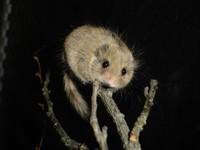
There is a small rodent native to Japan that has been the center of an educational project. The rodent is the Glirulus Japonicus, known domestically as the "Yamane". This small rodent is a protected species as their numbers are dwindling. The Yamane has been known to have inhabited the forests of Japan for several million years, much longer than human beings. There is a very interesting and educational project now underway in Yamanashi Prefecture centered around this small critter. The Kiyosato Educational Experience Project, otherwise known as KEEP is a comprehensive educational facility located in the mountainous area of Yamanashi. KEEP hosts a Yamane School every year for school age children to observe and learn about this creature now red-listed by the Ministry of the Environment. The school is held during winter vacation when the Yamane kept at the facility is actually in hibernation. The children are allowed to observe the hibernating creatures but the real treat is to watch the Yamane awaken from its sleep. The Yamane when placed in an environment where the ambient temperature is over 20 degrees C, will slowly awaken from its slumber. The children attending the Yamane school gather around to watch the slow process which takes about 80 minutes. During this time the children quietly observe the creature while noting that the small animal " stretches and yawns , just like us", to borrow their expressions of wonder. Afterwards the keepers feed the Yamane and return it to its hibernating state once again to sleep till their natural reawakening in March. Yamanashi Prefecture has been very progressive in their natural conservation policies building "animal pathways" to prevent wildlife from being harmed by the constant development of roads and highways for human use. The very first of such an endeavor was the Yamane bridge built over a public road in 1998 in answer to a movement started by the head of the KEEP Yamane Museum, where the Yamane School is currently being held. Following the building of this bridge, the prefecture built two more "animal pathways" in the region. One of the pathways has been monitored for 2700 hours to test its efficacy. The results showed that during the monitored period a total of 1500 yamane, squirrels, and other small rodents had actually used the overpath. Interest in this small red-listed creature, the Yamane, has led to a wider range of conservation activities and has also aroused the interest of future generations by bringing them in contact with the "real life activities " of this animal. Though the Yamane is a mere 8 centimeters in body length and weighs only 18 grams, KEEP has managed to maximize their impact on human attitudes towards nature.
The animal pathways project mentioned above can be found on the following site:
http://www.animal-pathway.jp/
Prepared for Zenoaq by Animal Literacy Research Institute
Jan.
2012
Politics and Animal Welfare

This year the animal welfare legislation in Japan will be reviewed and revised. Many experts have been involved in the task force set up by the Ministry of the Environment to discuss the details of the revision. The task force finished their final meeting in mid-December and their recommendations have been compiled into a comprehensive report to be delivered to the National Diet. The politicians are now ready to start the actual work of changing the law. National interest has also been very strong. The Ministry of the Environment received a total of approximately 56,000 comments when they opened up the possible contents of the revision for public comment. This has pushed the politicians to take a stand on animal issues. This in itself is a very good thing, but there have been some aspects of this phenomenon that can cause potential problems. One such problem has been the enthusiasm with which some of them have taken to the task of "getting involved". Many Diet members have established task forces with their peers to research issues in animal welfare with the result that the leading DJP, the Democratic Party of Japan, now has three separate groups undertaking such activities. The animal welfare in Japan originated as a law-maker initiated legislation and the next revision will also be such. This means that these alliances, or task forces, will all be working actively to formulate the basic contents of the next law. With three groups in the leading party plus the task forces that have been established in other parties such as the former leading part the Liberal Democratic Party, LDP, there will indeed be many "cooks" deciding what to put into the soup. At the same time, as most Diet members are not experts on animal issues, they need to be led in the right direction in order for a viable revision to take place. Unfortunately, because of the rise in interest in animals within political circles, the politicians have been relying on media -generated information to gather information and to seek out those who are capable of giving them guidance. Needless to say the media more often than not are attracted to sensational topics. "Animal people" that are skilled in playing into the emotions of the public are often not true experts on welfare issues but do attract media attention. These figures are then the ones that many politicians may rely on to guide them through the arena of animal protection within the legal system and how the changes should be made. This can be quite problematic if the figures that are chosen as "teachers" have extreme views concerning the protection of animals. Law -makers need to be educated by experts who are capable of expressing rational views based on facts. There are too many people in the animal welfare field in Japan who are out there for personal gain. Many are trying to find places to vent their self-righteousness. Facts are often distorted to suit their needs. Unless the members of the National Diet can access quality information and quality intellect the upcoming revision may suffer from a chaotic prelude.
Prepared for Zenoaq by Animal Literacy Research Institute
Dec.
2011
The Country of the Aquarium
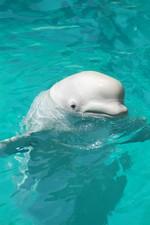
According to the IAF, Japan tops the world in the number of aquariums. Though the IAF does not keep track of all such exhibits around the world, of the 431 major institutions that participate in the IAF, 70 are located in Japan. This is closely followed by China with 60 institutions, and the United States with 57. It has been said that there is currently a rush to build such facilities in China and one may surmise that the actual numbers recorded has changed in a short span of time. But nevertheless according to the IAF headquarters in Belgium Japan still ranks first as the country with the most aquariums. The official statistics from the Japan Association of Zoos and Aquaria, in 2009 the average number of visitors per facility was 480,000. This marks an increase of 100,000 people in a single decade. The IAF headquarters states that this phenomenon may be due to the fact that the Japanese people through their diet rich in marine products has an affinity to the ocean. Published statistics from the FAO show that the average Japanese consumed 61kilograms of seafood in the year 2007. Though this figure is a mere fifth in world ranking, it is still a substantial amount. Another reason that aquariums are so popular in the country may be the fact that the seas around Japan are extremely rich in biodiversity. Experts have said that though Japanese territorial waters is a mere one percent of all bodies of water around the globe, it boasts a habitat that is home to 13 percent of all known marine organisms. Research has shown that there are approximately 34,000 marine species in the seas around Japan. This enables aquariums to obtain their displays readily.....and cheaply, since transport becomes as minimum issue. One more factor contributing to the large number of aquatic displays in the country is the advanced technology of domestic companies. The current trend in such display is the use of large tanks made through multilayering of acrylics. Japan has been a world leader in the technology to create strong acrylic material with a high level of transparency. The availability of such technology has certainly been a boosting factor in the world of aquaria. This trend in building enormous tanks for display started in the 1990's. One of the first such displays to be made was the huge doughnut-shaped tank in the aquarium built by the Tokyo Metropolitan government in Kasai, along the bay area. Visitors here are treated to a grand view of bluefin tuna "migrating" in circles around the tank. The current trend is in building acrylic tunnels through which visitors can take a "walk underwater". The development of cheaper technology to create artificial seawater has also added to the increase in the number of aquariums. This enables inland communities to build aquariums at lower costs. A joint venture between a major construction company and a pharmaceutical company has resulted in a system that can "make" seawater at a mere 4000 yen per ton.
Amidst the advancement in such technology more and more communities will begin to get their "very own" aquariums. This will in turn make Japan even more a country of the aquarium. When one thinks of how humans are forever trying to "box-up" nature to bring into their own backyard.....this in the long run may not be such a happy trend.
Prepared for Zenoaq by Animal Literacy Research Institute
Nov.
2011
Dangerous Dogs
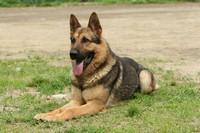
With discussions underway for the revision of the animal welfare law in Japan, one of the topics that has been brought up amongst the experts in the government committee is the issue of "dangerous dogs". There are many regions around the world where breed bans and regulations pertaining to the ownership of certain breeds of dogs have been put into effect. In the case of Japan this concept is still very new and many people are not aware of how communities in other parts of the world have taken concrete measures to restrict the keeping of these dogs. Because dog fighting is still legal in the country and the major breed used for this purpose is the native Tosa-inu, many people have been reluctant to take aggressive measures against the practice. Four prefectures, Tokyo, Kanagawa, Fukui, and Ishikawa have banned dog fighting under their prefectural ordinances, and a fifth, Hokkaido has banned dog fighting using dogs other than the native Tosa. But that, till date, is the only achievement of the anti-dog fighting lobby. During the current discussions however, it was discovered that one prefecture does actually have a prefectural ordinance regulating the keeping of "dangerous dogs".
Ibaragi Prefecture located northeast of Tokyo and contained within the same Kanto Region, has set forth certain rules pertaining to the keeping of certain breeds of dogs. This piece of legislation was passed by the prefectural assembly in 1979 following a series of serious biting accidents caused by certain large breeds. The law defines certain dogs as "designated dogs". There are 3 sections that define these "designated dogs". Section one contains a list of breeds that fall into this category. There are 9 breeds in this category, three native breeds, the Akita, the Kishu, and the Tosa, and 6 breeds of foreign origin, the German Shepherd, the Doberman, the Saint Bernard, the American Staffordshire Terrier, and the American Pit Bull Terrier. Section two states that besides those dogs listed in section one, any large dog measuring more than 60 cm in height and 70 cm in body length shall be included. Section three gives the governor of the prefecture the power to "designate" any other dogs that can be judged as "dangerous", not limited to but including dogs that have caused two or more biting accidents. This law further defines the "secure facility" in which these dogs must be kept. Furthermore, the owners of these dogs must register with and receive a tag for each "designated dog" which in turn must be displayed directly on the kennel or elsewhere, where the public can be made visually aware of the nature of the dog being kept on the premises. The Ibaragi ordinance does not specifically ban the keeping of or the selling/buying of these dogs. Nor does it specify any restriction on the breeding of such dogs or their sexual status. In some ways it is not as rigorous as other dangerous dog laws seen around the world. A major part of the regulation also seems to be aimed at the size of the dog rather than the temperament or breed types. Whether or not this legislation has indeed proved effective has not been studied extensively. However, the number of accidents within the prefecture has shown some decline since its passing.
It seems unlikely that Japan will put in any clauses pertaining to the keeping of certain breeds of dogs in the upcoming revision of the animal welfare law, but the interest does seem to be growing little by little.
Prepared for Zenoaq by Animal Literacy Research Institute
Oct.
2011
Revision of the Animal Welfare Law

Japan is currently working its way towards revising their law on animal welfare. The law since its first revision includes a supplementary clause which obligates the government to review its contents every 5 years. The current 5th year review has the added burden of animal issues pertaining to natural disasters as it has coincided with the great earthquake, tsunami, and the nuclear accident which hit the northeastern region of mainland Japan. The Ministry of the Environment has set up an expert committee of 18 individuals including representatives from the veterinary profession, animal welfare groups, legal professions, pet businesses, and animal control authorities as well as those representing the research community involved in animal experimentation. This is the de facto working group discussing the various details of what changes need to be made in the current law. The group till date has met over 20 times and has conducted hearings from various interest groups. These interest groups include the pet industry, the farm animal industry, animal control, animal rescue groups, and exhibitors. The working group will meet till the end of the year when a report of the proceedings and the recommendations made will be submitted to an umbrella committee. Some of the major items that are lacking in the current law has been the subject of heated discussions. One of these is animal fighting that is still legal under the national law, though several prefectures have local ordinances that ban such activities. The working group is looking into how to work this into the revision with due attention given to the "cultural" arguments that have sprung up from interest groups. Another issue, or two issues are the inclusion of lab animals and farm animals. Under the current law, there are no specific provisions that set out standards for farm animal care. At the same time, Japan does not have any law that governs animal testing. Though the Japan Science Council has published guidelines, there is no law that obligates laboratories and testing facilities to follow certain standards and to accept inspection by a third party. These two areas are the major "holes" in the current animal welfare law that welfare groups have been eager to fill. Needless to say, these issues are not the only ones that need to be addressed. Following the earthquake of March 11, the concept of evacuating with pets has become a serious concern. The authorities are now contemplating whether or not this should be made obligatory within the framework of the animal welfare law. Though the working group has spent long hours discussing multiple issues, their recommendation will not by any means insure that the changes will be made. The recommendations will first be presented to the animal welfare subcommittee of the Central Environment Council of the Ministry of the Environment from where it will be formulated into a draft legislation which will eventually make its way into the Upper and Lower Houses of the National Diet. During this process there will also be input from various political entities. There is still a ways to go but the process of revision is definitely in full swing and one can only hope for the best.
Prepared for Zenoaq by Animal Literacy Research Institute
Sep.
2011
Evacuating With Pets
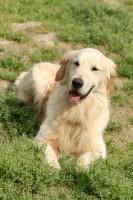
Six months have passed since the big disaster in the Tohoku region of mainland Japan.
Many activities in both the public and private sector are slowly bringing a sense of normalcy back to the region. In the animal scene, Fukushima, the area hit with the triple disaster of the quake, tsunami, and the nuclear accident, is on its way to building a second shelter to house all the animals that have been brought out from the "danger zone". Looking back on all that has been done, it is now up to the public sector to think hard about animal rescue during disasters in the future. This specifically boils down to the issue of whether or not the authorities should obligate animal owners to evacuate with their animal companions in the case of a disaster where the human population is asked to leave the premises. Similar to the discussions that took place after Hurricane Katrina tore through the southeastern region of the United States, the Japanese people are now being forced to think about preventive measures in the area of animal rescue. As was the case for the authorities after Katrina, the public sector is being forced to put a lot of resources, both human and financial, into rescuing and housing the animals that have been left behind during the human evacuation. The national law on animal welfare is currently being reviewed in preparation for a revision in 2012. A part of the discussions will focus on legislative measures that may or may not be taken in this regard. Currently the issue of evacuation with animals, specifically pets, is included in the ordinances of regional governments pertaining to evacuation measures during disasters. For example, the city of Tokyo consists of 23 wards, each ward having its own procedures for evacuation set forth by the ward office and the ward council of elected citizens. Of these 23 wards, 16 have included wording on pets during disasters. The Japanese term "doukou hinan" means "joint evacuation", and this term has been used to refer to evacuation of people accompanied by their pets. As mentioned earlier this term appears in the evacuation procedure manuals of 16 out of the 23 wards of the capitol city. Needless to say, Tokyo is a more progressive area especially when compared to more rural, agrarian communities. However the trend has definitely been set for a serious look into future reforms in this area nationwide. As for the contents of the various procedures within each ward, many ward authorities have prior agreements with the local veterinary medical association to enable them to step in to assist with the care and housing of animals. Some wards have specified that exotic pets will not be covered under these measures.
It is yet difficult to predict what will come of these discussions, but again the need for prevention is in our foremost thoughts. However, this does not point only to legislation securing a place for companion animals in the evacuation procedure but also to the need for a more comprehensive education process to elicit a stronger sense of responsibility in the pet owners themselves. After all they are the primary caretakers and guardians of their pets come rain or shine.
Prepared for Zenoaq by Animal Literacy Research Institute
Aug.
2011
Helping Animals After the Quake
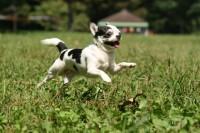
5 months have passed since the massive earthquake and tsunami hit the northeastern part of Japan. With respect to rescue activities and the subsequent reconstruction of infrastructure the acute phase has passed. With the passing of time, the needs of the people living in the disaster area have begun to change as well. For the animals, too, life is beginning to take shape once again. Aquamarine Fukushima, the aquarium which lost most of its exhibit to the disaster, has opened to the public once again with the help of like facilities around the country. Whether or not this is a positive development depends on the views of the individual. For the people in the immediate community, especially the children, the opening of the facility so quickly after the great disaster has been a source of inspiration and encouragement. On the other hand those who are more concerned about the welfare of animals have expressed concern over whether the facility has truly had the time to reflect on the incident to upgrade its disaster response measures. Pets continue to be retrieved/rescued from the nuclear danger zone and are being housed in the shelter prepared by Fukushima Prefecture or being retrieved by their families. The farm animals have not been so lucky as many continue to roam the danger zone. One hears stories of pigs raiding fields and private gardens and even breaking into homes to look for food. Many of them have gone feral and are still going strong. But the issue now is how will the farming community deal with them from hence onward as they are no longer dependent domestic animals but rather independent creatures with no "market value" in terms of meat. Euthanasia is a very difficult topic in Japan with many veterinarians and other animal professionals opposed to the process. The future of these farm animals is still in the dark.
On a different note , looking back on animal rescue in Japan during natural disasters in the past, we are somewhat encouraged to see that the system has made much progress.
Animal rescue first came to the fore in 1986 during the eruption of a volcano on the island of Oshima. At this point in time much of the animal rescue was undertaken separately by several different organizations. There was very little coordination amongst the groups. However, 10 years later in 1995 when the western part of Japan suffered from the great Hanshin earthquake, the government formed a cooperative group with four large animal organizations to coordinate funds, supplies, and human resources. The four groups were the Japan Veterinary Medical Association, the Japan Animal Welfare Society, the Japan Society for the Prevention of Cruelty to Animals, and the Japan Pet Care Association. These are the groups that are currently coordinating the disaster response team for the northeastern quake. There is also a rough division of labor between these organizations that have developed over time in accordance with their particular field of expertise. The JSPCA is in charge of running the headquarters and managing the donations, both financial and material. JAWS is in charge of sheltering activities, adoptions, and liaison with foreign groups. The veterinary medical association is, needless to say, in charge of medical supplies and veterinary support, as well as liaison with local veterinary associations. The JPCA is in charge of information, managing the website, preparing posters/fliers, and recruiting volunteers. Though there is still much to be desired in terms of speed, financial management, and effective coordination, the system is more concrete then it was during earlier disasters. The team will no doubt learn much from their experience this time. Let us hope that they will continue to grow .
Prepared for Zenoaq by Animal Literacy Research Institute
Jul.
2011
Animals in the Nuclear Evacuation Zone

The world has watched the news of the nuclear disaster and the evacuation of the people from the danger zones. Animal lovers all over have worried about the pets and the farm animals that have been left behind. Though the situation was not well handled by the authorities and the rescue efforts for the animals were far from ideal, there is one aspect to this issue that the media do not report. This is an important issue that is also being ignored by the various animal rescue groups that have made illegal trips into the disaster zone to pick up strays, illegal in the sense that the government had banned all unauthorized personnel from entering the area. This issue pertains mainly to pet animals, especially dogs and cats. The people living near the Fukushima nuclear plant were given very little time to prepare for their evacuation and needless to say , many were unable even to bring minimal personal belongings. They also could not bring their pets....or so the media say. Large dogs may have been difficult to remove on the spot, but could they not even find time to grab their cats and put them in a basket? After all the cats are alive and should take precedence over toothbrushes. Well, since most of the cats were free to come and go as they pleased they were not there when the owners needed them . Needless to say there was no time for the owners to go out looking for them and even now when government workers are entering the area to rescue these animals humane traps must be set to round them up since many of the owners have been unable to recover them during their temporary return to their homes. The majority of the dogs were living outdoors and not used to being placed in close proximity to many people. Neither were they experienced in being crated. This made it very difficult for families to bring their dogs out to the temporary evacuation centers set up by the authorities. Moreover many dogs and cats were taken out of the area by active animal rescue groups before the owners could go back. This was both a blessing and a curse as many groups simply "rescued" them and left the area with them without any documentation. This means that some people found that their animals had simply vanished without a trace. There are pet owners now who will never be reunited with their animals because they were simply "taken" by well-meaning people. Those animals that still remain in the area are dogs and cats that are extremely difficult to handle. The friendly kitties and pooches have all been picked up by the above mentioned "rescuers" and those who were never a problem for the owners to bring along with them in the process of evacuation are outside the area living with their people. The remainder are those dogs that have not been well socialized and cats that are semi-feral, and those animals who are too shy of strangers, and sometimes in times of such stress even of their owners. A well socialized pet is not a luxury, nor is it beyond every pet owner's ability. This is something that will save the life of the pet animal in times of disaster. To be able to evacuate quickly and safely every pet owner needs to be aware of what he or she must do beforehand. The volunteers working for the Fukushima shelter have commented on the kind of medical attention the animals require. The largest need being flea and tick control, vaccinations , and heartworm medication. These needs point to a problem far larger than simple animal rescue. Pet owners must be educated more vigorously on health care needs and proper handling . This in turn should not be an issue to be tackled post disaster. These are things that need to be thought out before anything happens. Let this be a lesson for everyone who lives with an animal. Disaster countermeasures must start now not after the event. And the media must report on this to educate the public because it is not what the authorities can do for us, nor is it what animal charities can do when disaster strikes. The first step to save an animal starts in the home.
Prepared for Zenoaq by Animal Literacy Research Institute
Jun.
2011
Animals in the Aftermath of the Great Earthquake of Eastern Japan

Rescue efforts for pets in the disaster area have been continuing with the help of both public and the private sectors. At the end of March, of the 88 member corporations in the Japan Pet Food Manufacturers Association, 37 donated a total of 293 tons of food for dogs, cats and rabbits. The Ministry of the Environment was able to budget for and purchase crates and tents for temporary sheltering of animals. The activities necessary to support pet animals and their owners are multivarious and each prefectural and municipal government is making efforts in their locality as for example in the case of the city of Sendai, the capitol city of Miyagi Prefecture, one of the three hardest hit zones. Sendai City has come up with a cooperative network of 4 different sectors in order to help the pet animals of their residents. The Sendai Municipal Animal Control Center is currently serving as a shelter for stray animals found in the disaster area. The city animal control authorities will care for these animals, help to reunite them with their families, and rehome those who need to move on. The Sendai City Veterinary Medical Association is encouraging member hospitals to take in whenever possible pet animals brought in by owners who are requesting temporary care whilst the human family is resettled. Two private local animal charities are helping gather information by sending out volunteers to the various refugee centers around town. These volunteers not only bring back valuable information about the needs of those pet owners who have evacuated with their pets, but they are also the transporting arm for supplies that must be carried out to those in need from the central depot where donations are brought in. And lastly, the pet business sector is playing a vital role as well. Many pet stores in the area are opening up their warehousing facilities to keep food and other supplies that have come in from around the country as donations. All four groups are actively working to alleviate the difficulties faced by both pet and owner, but the important word here is cooperation. Sendai City has established an emergency animal rescue headquarters under which the various animal specialists have come together to facilitate the cooperative efforts mentioned above.
Another aspect of pet care and support which will become increasingly important is the availability of new residential facilities that allow people to move in with their pets. Many outlying prefectures are offering public housing free of rent as temporary living quarters for those that have lost their homes. However, many public housing projects have been known to be off limits to pets in the past and it is up to each authority to decide what to do. At the same time, temporary housing is being built within the disaster area as well by the local government at a very rapid pace. It is important that these quarters be open to pet owners. From past experiences during the Niigata earthquake, all temporary housing built by the prefectural housing authority allowed pets to move in with their owners. This did not cause great problems and about 10 percent of those people applying for and moving into these homes were pet owners.
Much work still needs to be done for animal rescue activities in the disaster hit areas. The last remaining issue of great importance is the evacuation of animals from the nuclear danger zone. The Fukushima Prefectural government is finally allowing pet owners to go back into the area and is also helping retrieve animals from the zone. The speed with which this is being done is still unsatisfactory. Especially for those citizens concerned with animal welfare this has been a point for strong criticism.
The situation overall is still an uphill battle, but with the exception of the 20 km radius around the Fukushima #1 nuclear reactor, the animals and their people are beginning to see the light sat the end of the tunnel.
Prepared for Zenoaq by Animal Literacy Research Institute
May.
2011
The Great Earthquake
The world watched in horror as the entire coastline in the northeastern part of Japan was first shaken by the great quake and then simply washed away by the greatest tsunami ever seen by mankind. This natural disaster of immense scale took the lives of many, many human beings. But needless to say, animal lives were lost on an equally large scale. Voices of concern were raised in many parts of the international community about what kind of rescue efforts were being planned for the animals in distress. As in the case of the great Hanshin earthquake, a central disaster response team was immediately set up with the cooperation of 4 organizations, the Japan Veterinary Medical Association, the Japan Animal Welfare Society, the Japan Society for the Prevention of Cruelty to Animals, and the Japan Pet Care Association. This central team is currently in the process of helping local veterinarians in the disaster area and setting up shelter facilities within the disaster zone. In the immediate aftermath of the disaster, the main rescue efforts were being propelled mainly by the local veterinary hospitals. The veterinarians and their staff went about gathering information about animals in their locality as well as lending a helping hand to those animals and owners in need. Many hospitals were taking in animals from the streets, but this was not the largest of the issues they faced. Many vets helped distribute pet food and other supplies to local human refugee centers and they also took in many animals from owners who could not keep them in their temporary abode. They also needed to deliver comfort and solace to those owners who were unable to save the lives of their animal friends.
The central disaster response team is currently both supporting and supplementing these efforts started by the local vets.
Another group of animals that the media have not reported extensively on is that of animals in captivity. There are 14 zoos and aquaria in the northeastern pacific coast that were affected by the disaster according to the Japan Society of Zoos and Aquaria. Most of the issues that these facilities faced immediately after the quake and tsunami were those problems surrounding the lack of power and the delay in the delivery of various types of food to feed the various species. No wild animals escaped from any of the facilities but Aquamarine Fukushima, a large aquarium hit by the tsunami lost all power and water supplies. The first floor of the facility was completely submerged during the tsunami. As a result 200 thousand fish of various types died due to the lack of water management , heating , aeration , and other necessary procedures. This was by far the largest loss suffered by the zoo community. This may be a good time for all facilities around the world who keep captive wild animals to think about what more should be done to ensure that the lives they are responsible for will continue to be safe even during large scale disasters.
The above is by no means the entire story of the animals who suffered alongside their human friends during this natural disaster of unprecedented scales. This column will continue to pick up topics of interest pertaining to the rescue efforts of animals in the disaster zone. Below are a few donation sites in English which readers may want to look into.
Prepared for Zenoaq by Animal Literacy Research Institute
Mar.
2011
Rabbit Island
There is a very famous island in the Seto Inland Sea just off the coast of Hiroshima.
This unmanned island was formerly known as the Poison Gas Island . During the Pacific War the Japanese army was said to have used a facility on the island to develop
poison gas for weapon use. However, the same island now attract hundreds of animal lovers each year, especially bunny freaks, because the island is now known as Rabbit Island. The small island with the circumference of a mere 4 kilometers, Okunoshima,
is approximately 10 minutes by boat from a small port on the shores of Hiroshima Prefecture. This island is home to a large number of wild rabbits. People who visit the island are fascinated by all the rabbits they see the minute they set foot on its shores.
There are rabbits romping in every corner of the fields, rabbits hiding in every bush, and lots and lots of "rabbit holes" on the hillside. These rabbits are used to seeing human visitors and will gather around to munch on gifts of carrots and cabbages they bring. How did these rabbits come to live on this island? Many people had originally speculated that they were lab animals escaped from the poison gas laboratories that used to be on the island. But truth seems to be a little different. These rabbits are the direct offspring of several rabbits that were released on the island by a local elementary school from the mainland about 40 years ago. Since there are no predators on the island with the exception of crows, they seem to have thrived over the years. Needless to say with no natural enemies coming after them the rabbits certainly were able to multiply rather quickly. The island was originally uninhabited but currently a public lodging facility has been built to accommodate visitors. As more and more people began to become aware of the existence of these "semi-wild" rabbits on Rabbit Island, there has henomenon been a large increase in the number of visitors from the mainland. Bunny lovers from around the country gather to watch the activities and antics of the inhabitants of this now famous rabbit community. Though there is merit in the fact that more people are now aware of these rabbits which should lead to a heightened awareness about their welfare, there have been negative side effects as well. For example, there has been an increase in the number of "accidents" on the island resulting in the injury of the "rabbit-folk". Though these rabbits do not overtly shy away from people, they are in essence, wild. Therefore any attempts at trying to pick up a creature will immediately result in a panic response. Such responses will most often result in the rabbit struggling to get free and then being dropped. Fractures have been caused thus and the problem will probably not go away any time soon. Another issue is that of irresponsible owners bringing unwanted pet rabbits to the island and releasing them, blissfully unaware of the fact that it is not so easy for a pet rabbit reared in the home to all of a sudden be asked to "get by" in the wild.
We do not know how Rabbit Island will fare in the future but the fact that it is already there will not change. Though the cause of the phenomenon is, as always, human ignorance we cannot ignore its consequences. Rabbit lovers throughout the country are pondering about what will happen next.
Prepared for Zenoaq by Animal Literacy Research Institute


